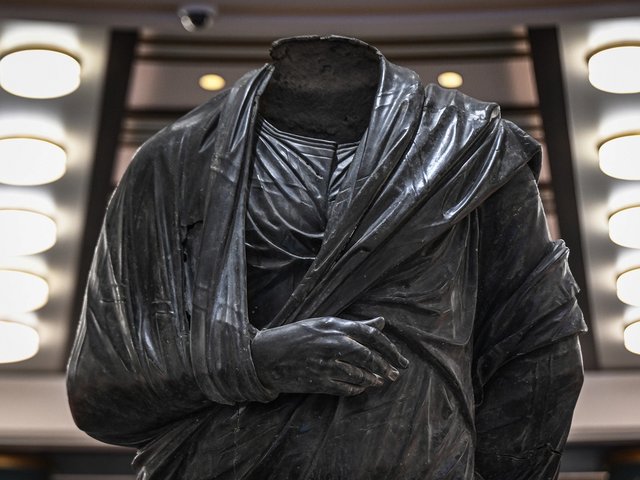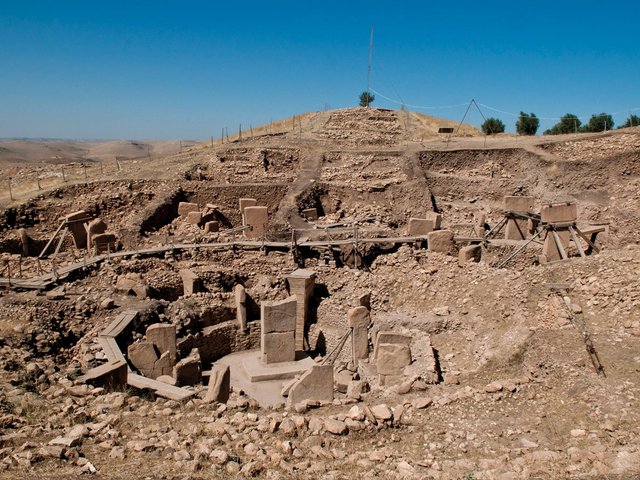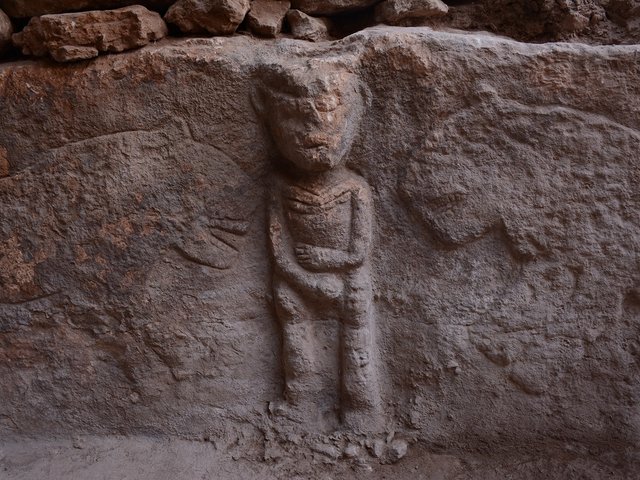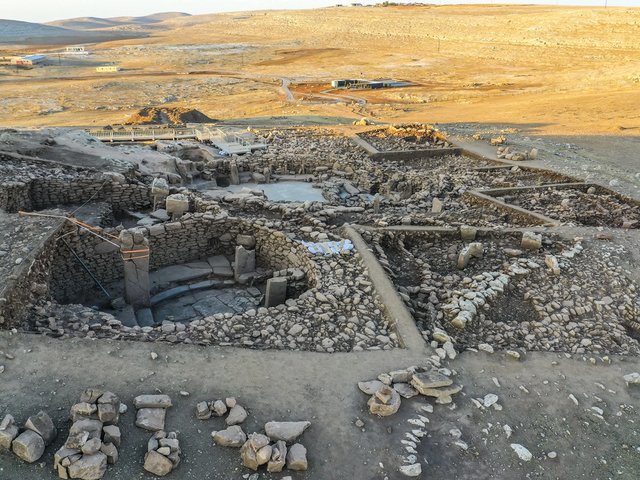The discovery in southeast Turkey of an 11,000-year-old pillar carved with a face could reframe our understanding of how early humans expressed themselves.
The face staring out from a 135 cm-tall standing stone—featuring a prominent nose, deep-set eyes and a sharp, angular jawline—was unearthed last week by archaeologists at the Neolithic site of Karahan Tepe near the Syrian border, according to excavation director Necmi Karul of Istanbul University.
It is the first finding of a human face on a T-shaped pillar—a type of monolith found en masse within a constellation of prehistoric sanctuaries known as Taş Tepeler, or the Stone Mounds. This area includes Karahan Tepe as well as the World Heritage List-inscribed site of Göbekli Tepe, the world’s oldest known temple complex.
The etched face on this example helps bolster Karul and his fellow researchers’ interpretation of the T-shaped pillars as not merely architectural features but as symbolic renderings of the human form.
Like other T-shaped pillars, the latest find served as a buttress to support the conical roof of a building. Numerous anthropomorphic pillars bearing arms or hands or wearing garments, such as belts and fur, that are anatomically proportionate have been found at Karahan Tepe, where excavations began in 2019.
“It is fair to say that the only missing element in this pattern was the face,” Karul tells The Art Newspaper. “The human-faced pillar we encountered in a structure containing domestic elements, such as grinding stones, fills this gap.”
He continues: “This example provides clear evidence that T-shaped pillars symbolised humans and it is a unique and abstract example of the self-expression of the people of the period. Similar finds further define the cognitive transformation people underwent during the Neolithic age.”
How was the discovery made?
Perched on a limestone plateau between the Tigris and Euphrates rivers, Karahan Tepe was built as both a residential and a ritualistic centre nearly 2,000 years before widespread agriculture, challenging the view that complex spiritual life arose only after farming began.
The Stone Mounds is thought to span a dozen sites, set across some 200km. It “was home to perhaps the most magnificent settlements of the Neolithic age,” Karul says.
Karahan Tepe was occupied for about 1,500 years between 9400 and 8000BC, when its inhabitants intentionally backfilled the site, then abandoned it.
Karul and his 220-person team began simultaneously digging out nearly 20 structures last year, quickly uncovering walls that were buried close to the surface. Only as the team completed this current dig season did they lift the stone to its original standing position to discover the carved face.
Early indications suggest the carving dates to the start of the ninth millennium, said Karul, whose team relies on carbonised material from wall joints, plaster or other fills to date Karahan Tepe’s stonework.
Mehmet Nuri Ersoy, Turkey’s minister of culture, is overseeing what the government has called a “golden age of archaeology,” investing about $150m annually in hundreds of excavations, including the Stone Mounds, and other historical sites.
“This artefact found at Karahan Tepe sheds light on human history as the first example of a Neolithic human carving themselves into a T-shaped pillar,” Ersoy said in a social media post when he announced the find on Monday.
Other depictions of man found at Karahan Tepe include a 2.3-metre tall statue holding an erect penis and a bearded head with a serpent’s body that emerges from a wall.
“One of the things Karahan Tepe taught us in our first year was that nothing we encountered would be the ultimate surprise,” said Karul. “The Neolithic era is one of the most significant transformations in human history and a common thread in all of our pasts.”






